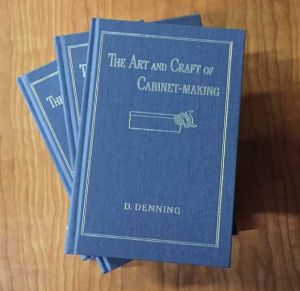We may receive a commission when you use our affiliate links. However, this does not impact our recommendations.
Editor’s note: The following is an excerpt from The Art and Craft of Cabinet-Making. This book provides an incredible look into traditional woodworking instruction. Though the English sounds peculiar to the modern ear, the commentary is evergreen. Pick up a copy and connect with a bygone era of craftsmanship. – David Lyell
The novice must not think that he will be able even by following the clearest directions in the most careful manner to use the tools properly at first. He must practice before he can gain facility, although there are some who seem to think that if they are told or shown how to do a thing they ought to be able to manage equally well. The things look so very easy when done by skilful hands that beginners sometimes apparently forget that it has taken time for even the cleverest worker to learn. The young practical mechanic, of course, learns almost insensibly how to hold and use his tools, for if he goes wrong he is checked at once by those over him. The amateur, however, must rely more on himself, and it is principally to aid him that this chapter is written. (Pages 131-132)
The Art and Craft of Cabinet-Making
By David Denning
Our reprint of David Denning’s classic “The Art and Craft of Cabinet-Making” (first printed in 1891) is a must-have for every woodworking student – particularly those who appreciate not only pre-electric woodworking tools and techniques, but those who want a well-made tome that will last at least as long as the best mortise-and-tenon joint. This hardcover, cloth-bound and foil-stamped book features acid-free paper and a Smyth-sewn binding, and was printed in the U.S.A.
Here are some supplies and tools we find essential in our everyday work around the shop. We may receive a commission from sales referred by our links; however, we have carefully selected these products for their usefulness and quality.











